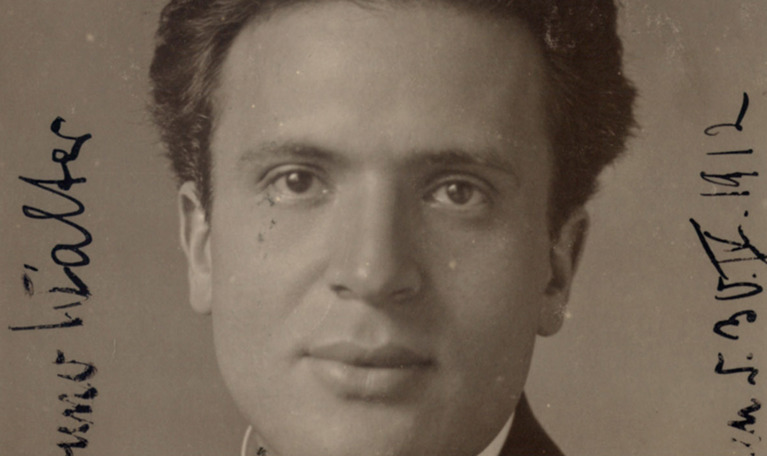The case of Bruno Walter

Bruno Walter
Bruno Walter conducted the orchestra on numerous occasions between 1929 and 1950.
German Bruno Walter (1876–1962) was one of the world’s leading conductors in the first half of the twentieth century. He is acclaimed in particular for his interpretations of the work of Gustav Mahler. Walter also worked with Mahler around the turn of the last century, and he conducted the posthumous premiere performances of both Das Lied von der Erde and Symphony No. 9.
Bruno Walter was the newly appointed chief conductor of the Leipzig Gewandhaus Orchestra when he debuted with the Stockholm Concert Society in Konserthuset on 2 October 1929, followed by another concert two days later.
The first programme included performances of Richard Strauss’ Don Juan, Mozart’s Eine kleine Nachtmusik and concluded with a real Walter specialty, Mahler’s Symphony No. 1, “Titan”. For the programme on 4 October 1929, he conducted Ernest Bloch’s Concerto Grosso No. 1, Haydn’s Symphony No. 86 in D Major and Brahms’ Symphony No. 2.
Bruno Walter then returned to Stockholm on many occasions, often with a classic Viennese repertoire and plenty of Brahms. He conducted the Stockholm Concert Society in 1936 (two concerts), 1938 (three concerts, including Mahler’s Symphony No. 2 “Resurrection Symphony”), 1946 (four concerts) and 1950 (three concerts).
At one of the concerts in 1938, Bruno Walter was also the piano soloist for Mozart’s Piano Concerto No. 20. That programme also included Swedish music: Kurt Atterberg’s Ballade and Passacaglia over a theme from a Swedish folk tune.
At his final appearances in Konserthuset, in September 1950, Bruno Walter conducted a programme dedicated entirely to the music of Brahms: Tragic Overture, Schicksalslied and A German Requiem.
Walter emigrated to the US in 1939 and from 1941, he was even active with the Metropolitan Opera, where he ultimately led around 80 performances.
